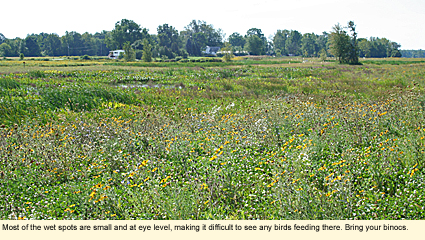Home > Recreation > Nature CentersNature Centers in the Finger LakesSeneca Meadows Wetland Preserve1977 State Route 414 Seneca Falls, NY 13165
LOCATIONEducation CenterThe Education Center is located on State Route 414 in the Town of Seneca Falls in Seneca County. Wetland PreserveThe wetland preserve is located on the next road parallel to and east of State Route 414--Black Brook Road. The Preserve is on the west side of the road across from the intersection of King Road. It is well marked with a sign and fairly obvious with a long fence visible from the road.
The education center and the preserve are not currently connected. The drive from one site to the other is approximately 3 mi./4.8 km. GENERAL INFORMATIONThe education center and preserve are owned by one of North America's larger non-hazardous waste management corporations--IESI. It operates a huge waste management facility on State Route 414 called Seneca Meadows. IESI owns the land on which the education center and preserve are located.
EDUCATION CENTERThe education center is open only on Tuesdays from 10:00 a.m. to 2:00 p.m. and is staffed by a person from the Montezuma Audubon Center (MAC). Inside are displays about the preserve and about recycling. In conjunction with MAC, it offers nature programs.
Behind the center is a small field with a mowed perimeter trail. A pond just to the north of the center also has a trail. WETLAND PRESERVEThe 450-acre preserve is made up of several habitats that fall into the two general categories--woods and prairie. The amount of standing water depends on the amount of rainfall, but there are some permanent pools and some large stands of cattails.
Originally farm land, the open land was seeded and is now a lush meadow of native and non-native herbaceous perennials and grasses. Trees have been planted in some areas to extend the woods.
Although the woods is dense with trees, especially mast trees such as beech, hickory, and oaks, including the native bur oak, the understory is thick with native and non-native woodland plants, ferns, fungi, and some shrubs.
The mix of these two general habitats makes for an interesting and rewarding outdoor experience.
HikingThere are 7 mi./11.2 km. of trail. These trails vary from the Ada Trail (crushed limestone), to the woodland trails (bark chips), to the Main and Blue Heron trails (medium-sized crushed limestone). All trails are dry and require no special footwear. Jogging is permitted.
Beware: There is a considerable amount of poison ivy in the woods, however, if you stay on the trail, you should not come in contact with it. BikingBiking is permitted, however, because of the bark chips and medium-sized crushed limestone, touring bikes are not recommended. Most of the trails are flat. Except for the Prairie Overlook Trail (.2 mi./.3 km.), there is only one hill, and it is slight. This is a good ride for beginners and individuals who can't manage a long hike.
PhotographyPhoto ops are everywhere. There are many plants to photograph, though, in the prairie, you may find them waving a bit in the wind. The prairie also offers lots of butterflies and some dragonflies and other insects in season.
Spring, before the tree leaves create too much shade, is probably the best time to photograph the woods, though late summer and early fall provide some interesting fungi.
WinterThe trails will make for good cross-country skiing and snowshoeing, however, you will need to time it just right as a too-thin coating of snow over the course limestone may allow the sharp stones on the Main and Blue Heron trails to damage your equipment. WildlifeAs this is a new preserve, wildlife is limited but will continue to increase. Spring will provide good opportunities to see a variety of reptiles and amphibians in the prairie pools. Tree frog jays, chickadees, nuthatches, brown creepers, and perhaps woodcock and snipe. AccessibilityOnly the Ada Trail is accessible to wheelchairs and electric chairs. This is a .6 mi./1 km. trail near the parking lot with prairie plants and a couple of small pools of water. DogsDogs are permitted on the trails and must be leashed at all times. Water is not accessible, so bring your own. AmenitiesThere is a portable toilet that is wheelchair accessible. There are no picnicking facilities, however, there are tables and a pavilion at a Town of Seneca Falls park called Vince's Park, which is nearby at the intersection of State Route 318 and an apparently unnamed connector road to U.S. 20.
Brochure and Trail Map (pdf) (10MB) (N.B.:True size is 11 in. x 17 in.) See also: http://senecameadows.com/
NEARBY PLACES OF INTERESTMontezuma National Wildlife Refuge Women's Rights National Historical Park
Updated 6 September 2013
|
|
|


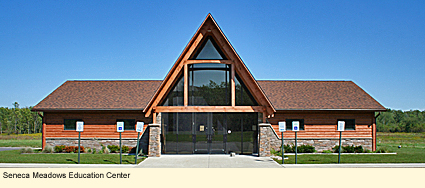
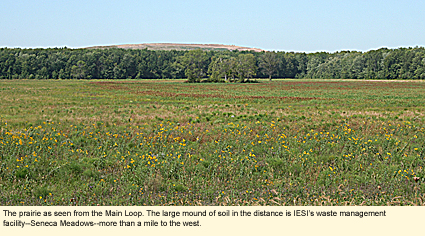
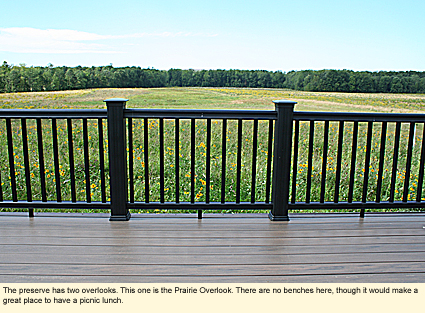
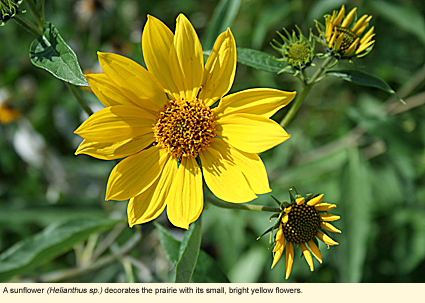
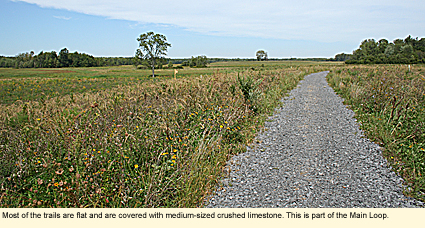
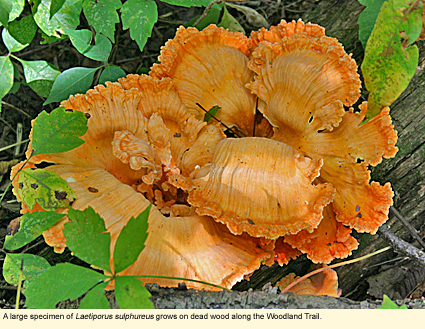
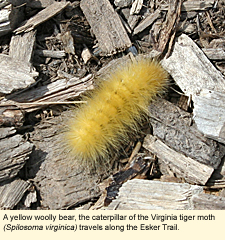 s already inhabit the woods. Raccoons and other small mammals seem to be investigating the trails when they can do so without too much risk. Indiana bats are thought to roost in small islands of trees in the prairie, and bat boxes have been installed in the trees to attract them. In the prairie, birders should watch for sparrows, swallows, and bluebirds. In the wetlands, watch for red-winged blackbirds, bitterns, herons, and puddle ducks. In the woods, watch for woodpeckers, warblers, vireos, thrushes, blue
s already inhabit the woods. Raccoons and other small mammals seem to be investigating the trails when they can do so without too much risk. Indiana bats are thought to roost in small islands of trees in the prairie, and bat boxes have been installed in the trees to attract them. In the prairie, birders should watch for sparrows, swallows, and bluebirds. In the wetlands, watch for red-winged blackbirds, bitterns, herons, and puddle ducks. In the woods, watch for woodpeckers, warblers, vireos, thrushes, blue